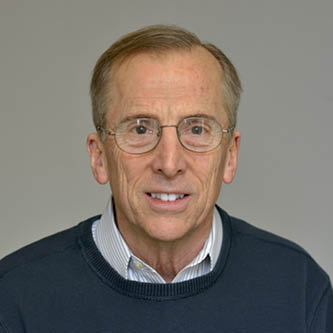Faculty Emeritus: Max O. Funk, Ph.D.

Distinguished University Professor
Email: max.funk@utoledo.edu
Office: WO 3201
Phone: (419)530-1509
Fax: (419)530-4033
Professional Background:
B.S., 1971, Penn State University
Ph.D., 1975, Duke University
N.I.H. Postdoctoral Fellow, 1976-78, University of Chicago
Publications
Research Synopsis:
Bioorganic Chemistry, Biochemistry:
Peroxide chemistry; mechanistic enzymology; protein chemistry; lipid metabolism.
The broad range of our research is the study of the peroxidative metabolism of polyunsaturated fatty acids. Our focus has been an investigation of the enzyme lipoxygenase. Lipoxygenase catalyzes the peroxidation of an all cis-1,4-pentadiene system in fatty acids. The importance of this metabolic pathway is just beginning to be realized. For example, the lipoxygenase catalyzed peroxidation of arachidonic acid is the inaugural step in the biosynthesis of the leukotrienes, potent mediators of numerous physiological processes.
Wehave recently developed methods for the analysis of lipoxygenase isoenzymes by isoelectric focusing and for their purification by chromatofocusing. These techniques have provided sufficient quantities of individual isoenzymes that studies of the structures of these proteins have been undertaken. In particular we have found it possible to combine our efficient purification techniques with tissue culture methods for the isolation of lipoxygenases with isotopically enriched atoms. The first successful example of this was the incorporation of iron-57 into the enzyme. This makes possible the characterization of the catalytically important iron atom lipoxygenases by Mossbauer spectroscopy.
The availability of large amounts of highly purified lipoxygenases has also made it possible for us to investigate the conditions for crystallization of the protein. We have recently succeeded in obtaining crystals of one lipoxygenase isoenzyme for structure determination using X-ray diffraction techniques.
The mechanism of lipoxygenase catalysis is also under investigation. In order to understand enzyme, substrate, and product interactions, we have synthesized a series of analogs of the substrate and products of lipoxygenase catalysis. A series of stable analogs of the product has been prepared and characterized. These compounds are being used in kinetic studies to explore the interesting activating effect of the product on the enzyme and in immobilization experiments to prepare new affinity methods for the purification of lipoxygenase. A group of unsaturated fatty acids containing sulfur has also been synthesized. These compounds resemble the substrate of the enzyme. Among the materials prepared so far we have found one reversible inhibitor and one mechanism based inactivator of lipoxygenase.
Recently an investigation of the substrate requirement of lipoxygenase for an all cis geometry in the polyunsaturated fatty acid was undertaken. Much to our surprise, both of the geometrical isomers of the natural substrate linoleic acid were catalytically oxygenated by the enzyme. Of even greater significance was the outcome of the reaction as reflected in the structures of the products which revealed interesting features of the catalytic mechanism.
Inorder to measure lipoxygenase product concentrations at very low (physiological) levels, we are investigating the application of high performance liquid chromatography with electrochemical detection to the analysis of peroxides. Feasibility has been demonstrated in a model system using a variety of organic peroxides. As little as 350 pg of benzoyl peroxide (five orders of magnitude improvement in sensitivity over conventional methods of peroxide analysis) could be detected in this way. We will extend this work by applying the methods to the detection of a variety of peroxide metabolites of arachidonic acid in both in vitro and in vivo systems.
Clearly, our multifaceted approach to the study of lipoxygenase often takes us across the traditional boundaries of chemistry. This strategy is both challenging and stimulating as the various aspects of the research progress and interact.


